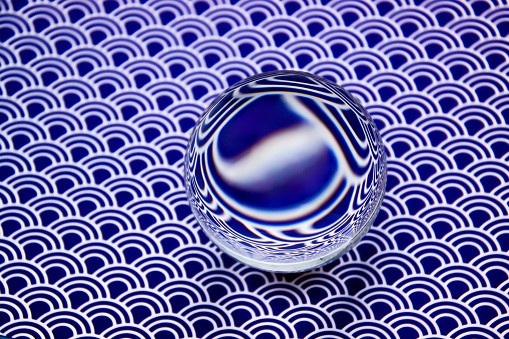
A team of physicists has created a flat lens that allows temperature-dependent excitonic light manipulation.
How Does a Lens Work?
In physics, lenses are optical devices used to bend and focus light. Normally, lenses depend on their curved shape to achieve this effect.
Curved-glass lenses work by refracting or bending light as it enters and exits the glass. As a result, things are made to look larger or closer than they really are. For over 2,000 years, humans have used curved lenses to improve vision, to examine tiny microorganisms, and to study the motion of planets and stars.
To determine the angle of view produced by a lens, scientists rely on focal length, or the measure of how strongly light is converged or diverged by the optical system. The focal length of a lens tells how much of the scene will be captured or how large individual objects will be.
Zone Plate Lens
Physicists from Stanford University and the University of Amsterdam took a different approach in utilizing the potential of lenses. They have made a flat lens which is only three atoms thick and relies on quantum effects. The details of their experiment is discussed in the paper "Temperature-Dependent Excitonic Light Manipulation with Atomically Thin Optical Elements."
Led by Ludovico Guarneri, Jorik van de Groep, and Thomas Bauer, the research team used a single layer of a unique material known as tungsten disulfide (WS2) in constructing a flat lens. This optical device is only 0.6 nanometers thick, making it the thinnest lens on Earth so far.
Instead of depending on its curved shape, the new lens is composed of concentric rings of tungsten disulfide with gaps in between. This is known as a "Fresnel lens" or "zone plate lens," which focuses light using diffraction instead of refraction.
Compared to the wavelength of light that hits it, the size and distance between the concentric rings determine the focal length of the lens. In this study, the scientists designed an optical system to focus red light 1 millimeter from the lens.
One of the unique characteristics of the new lens is that its focusing efficiency depends on quantum effects within tungsten disulfide. This feature enables the material to absorb and re-emit light at specific wavelengths efficiently. It also provides the lens a built-in ability to work better for these wavelengths.
In this novel design, quantum enhancement works by allowing tungsten disulfide to absorb light by sending an electron to a higher energy level. The negatively charged electron and the positively charged particle "hole" are left behind in the atomic lattice. The ultra-thin structure of the device allows them to stay bound together by the electrostatic force of attraction, creating what is known as an "exciton."
While some of the light that passes through the lens makes a bright focal point, most of them are not affected. This may appear like a disadvantage, but it actually paves the way for future augmented reality glasses. They can be used in situations where the view through the lens should not be disturbed, but only a small part of the light can be utilized to gather information.
Check out more news and information on Lens in Science Times.
© 2026 ScienceTimes.com All rights reserved. Do not reproduce without permission. The window to the world of Science Times.












